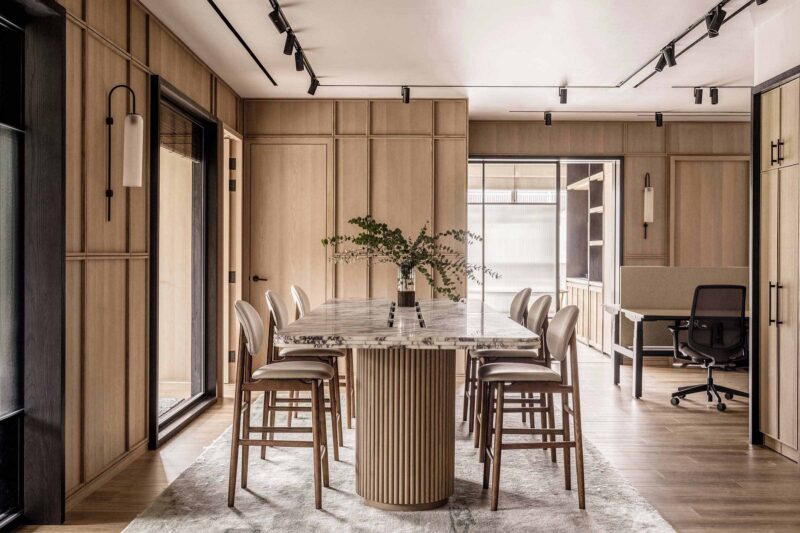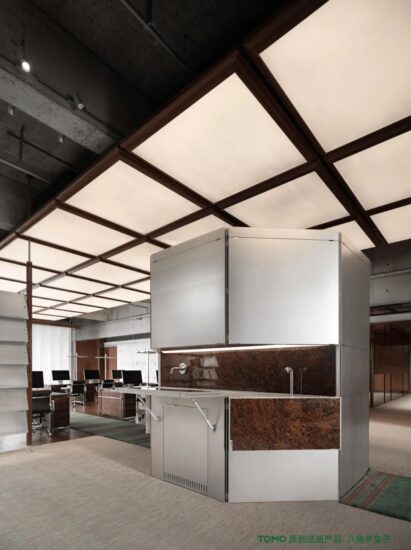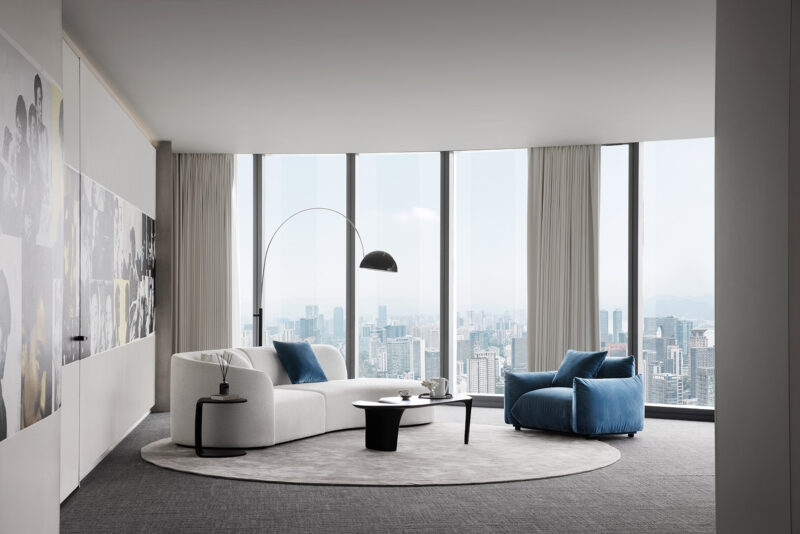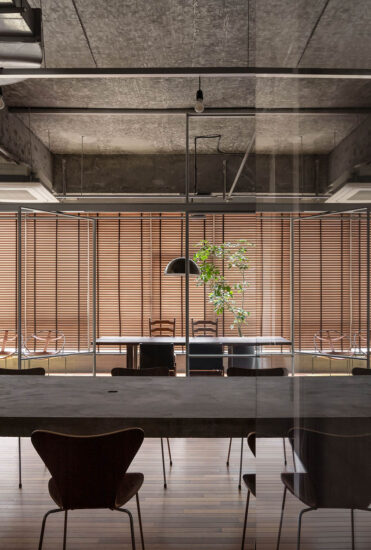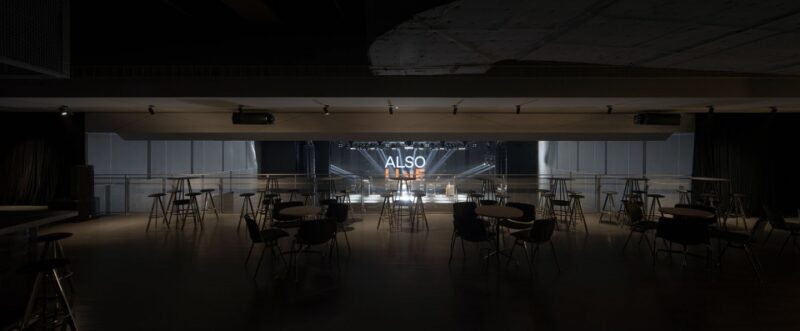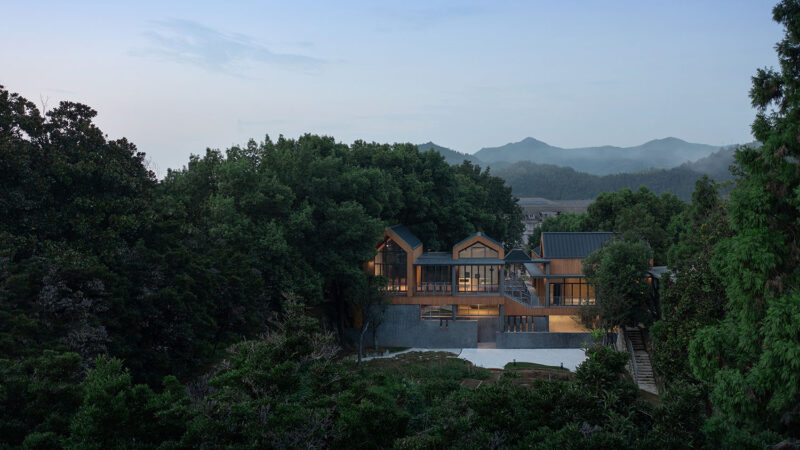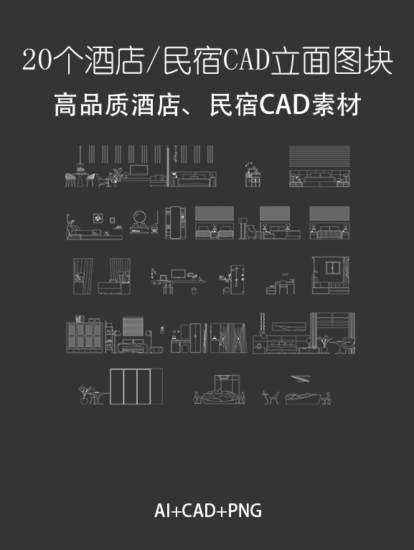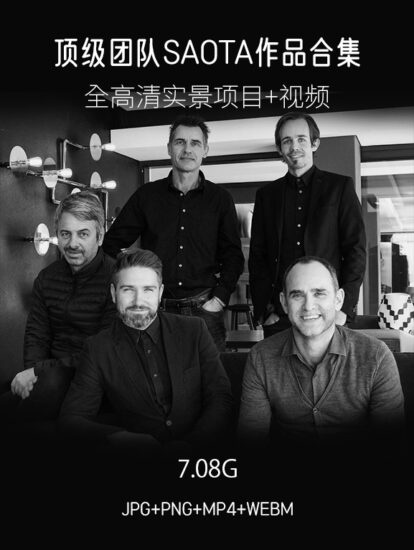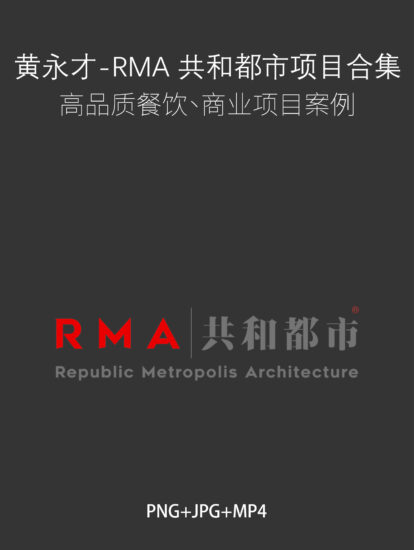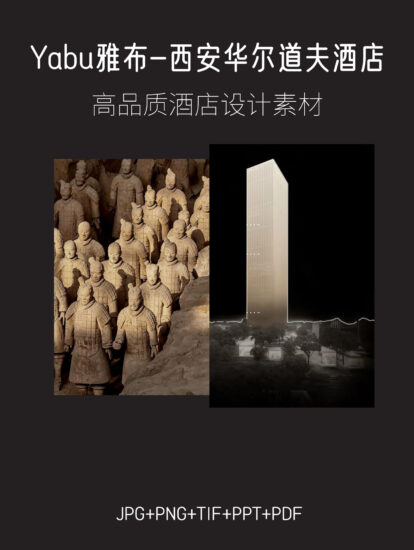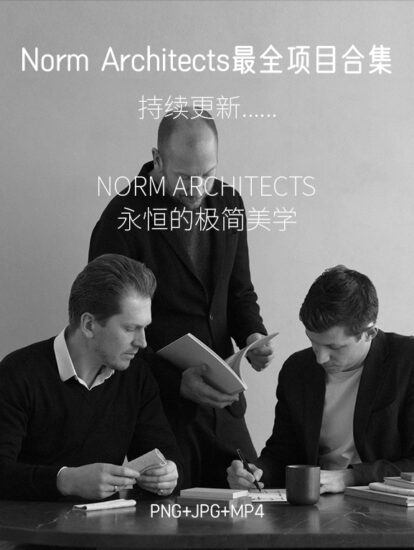LOFT中國感謝來自 建築營設計工作室 的辦公樓項目案例分享:
該項目位於市郊一處工業廠房區域之中。園區場地空曠平整,北側比鄰市政道路,南側是城市尚未開發的空地。辦公樓被規劃於園區的中部,東西兩側分布著由鬆林、草坪、步道組成的庭院,南側留下一片寬闊的前廣場以及停車場。
The project is an office building of a logistics company, located in an industrial park on the outskirts of a city in Northern China. The industrial park occupies a plain and expansive land area, which is adjacent to an urban road on the north and next to an unexploited urban land on the south. The office building was planned to sit at the middle of the industrial park, with pine trees, lawns and footpaths forming gardens on its north and west sides, while on the south side is a wide front court and a parking lot.
辦公樓東西長約85米,寬約50米,占地麵積約8000平米,水平鋪展開於場地之中。在相對寬鬆的用地條件下,設計充分圍繞著院落關係組織建築空間布局,結合功能需求和流線路徑產生內外之間多樣的場景,營造陽光、綠色、充滿活力的工作環境。
The architecture is 85 meters long and 50 meters wide, stretching in east-west direction on a site of about 8,000 square meters. Considering the site is relatively large, ARCHSTUDIO planned the layout of architectural spaces by incorporating courtyards, and created various indoor and outdoor scenes based on functional needs and circulation routes, thereby produced a light-filled, green and vigorous working environment.
1、水平性空間
I. Horizontal space
建築的上下兩層會呈現完全不同的空間印象:首層對外封閉內向,二層則開敞外向,從而強調了建築整體的水平性特征。建築的外部形象產生類似於中國傳統建築的意向——漂浮的屋頂與厚重的台基,兩者之間是自由透明的空間。首層為加高的“台基”部分。兩層庭院將“台基”切分為平行的南、中、北三條功能體塊,南側功能塊之內也包含著若幹小庭院。保證首層所有房間都與庭院相鄰,具有良好的采光和多樣景觀。“台基”之上二層由玻璃幕牆靈活地劃分出多尺度的辦公和公共空間,使得內部活動可自由的拓展至室外平台。六處連橋水平串聯三條功能空間,創造簡潔有效的流線路徑並進一步劃分出幾處內向庭院。
The office building consists of two floors, which present totally different visual impressions. 1F is enclosed and inward-facing, while 2F is open and outward-facing. Such contrast highlights the horizontal layout of the overall architectural space. The building has a “floating” rooftop, a solid pedestal and a transparent space in between, which is similar to the image of traditional architectures to some extent. Several two-storey-high courtyards separate 1F into three parallel horizontal functional blocks. In this way, each room on 1F is connected with a courtyard, ensuring ample daylight and forming diversified landscape. Besides, the block on the south itself includes some small-scale courtyards. 2F has a large area of glass curtain walls, which mark off various functional spaces of different scales and also enable indoor activities to be extended to outdoor terraces freely. Six bridges link the three functional blocks of the building, generating efficient circulation routes and further dividing off several inward-facing yards.
2、光影的庭園
II. Play of light and shadows
一片麵積約4000平米的平屋頂+遮陽格柵覆蓋了整個建築場地。屋頂遮陽格柵設計意象來自於周邊農田景觀的線性肌理,並結合方格網結構與平直樓板產生“柔化”的效果。遮陽格柵會產生由建築中心向兩邊產生由密到疏的漸變排列,每一條格柵本身也存在著弧形的寬度漸變,同時鋁製格柵表麵穿孔以弱化實體感,由此將鋼結構屋麵與遮陽係統結合為一個整體的大屋頂。半透明感的屋頂宛如陽光下一片巨大的燈罩,其下的建築和庭院自然演變為光影的森林。空間跟隨著一天之中陽光的變化,光影的韻律交織疊合,與人的活動一起共同演繹生動的自然場景。
The entire architecture is covered by a 4,000-square-meter flat roof and sun-shading grilles formed by aluminum strips. The grilles draw on the linear forms of surrounding farmland, and soften floor slabs. From the building’s middle area to east and west sides, the interspace between aluminum strips gradually decreases. Besides, each aluminum strip features width variations and perforated surfaces. The steel-structured rooftop of the three architectural blocks and the sun-shading grilles together constitute an integrated large roof. It looks like a lampshade with interspaces, which allows light to filter down, and thereby turning the building and courtyard beneath into a “forest” of light and shadows. The varying light brings changes to spaces throughout the day. The rhythmic interplay of light and shadows, as well as human activities, together produce distinctive vivid scenes.
3、複合的場所
III. Multifunctional compound
圍繞辦公建築的基本特征,結合內外場景衍生出多樣複合的工作生活場所。屋簷之下兩層通高的入口接待廳正對著前廣場,背後依托層層展開的庭院與樹木,向用戶與訪客表現出鮮明的第一印象。建築首層設置了多種類型的辦公空間,包括麵向庭院的中、小型辦公室、開放辦公區、會議室,可容納300人的多功能廳以及財務室、結算室等。各部門辦公區域結合平麵進行分區布局,避免相互幹擾。在人流路徑的結合部設置一些休閑空間,比如麵向樹院的咖啡廳等,讓人們共享愜意的社交、休憩時光。三處室內樓梯和兩處室外樓梯連接上下兩層,兼顧工作流線的效率與舒適。二層的空間布局更為自由靈活,包括若幹大辦公室、大會議室、多媒體室以及圖書閱覽區、健身房、員工餐廳等。大屋頂之下盡量透明的牆麵讓所有房間均與露台和屋頂花園緊密相鄰,光影之下的室內外環境融為一體。
Focusing on the basic characteristics of office buildings and combining indoor and outdoor scenes, ARCHSTUDIO created a multifunctional working and living compound. The double-height reception lobby faces the front court, which presents a striking first impression, with courtyards and trees unfolding at its back. 1F is composed of various working spaces, including small and medium-sized offices, an open working area and a conference room that face courtyards, a multifunction hall that can accommodate 300 people, a finance office, and a settlement office, etc. Working areas of different departments are separated, so as to avoid interference. At the junctions of circulation routes, some leisure areas were set, such as a cafe which faces a courtyard with a tree, with a view to enabling people to communicate or take a break in a relaxing way. Three indoor staircases and two outdoor stair cases lead to 2F, the design of which fully took into account efficiency and smoothness of routes. The space organization on 2F is more flexible, which contains several large offices, an expansive conference room, a multimedia room, a reading area, a fitness room, the staff canteen, etc. The transparent glass walls closely connect each room to outside terraces and roof gardens, and integrate interior and outdoor spaces into a whole.
4、自然的建造
IV. Natural construction
建築在材料使用上較為克製,注重材料與空間的邏輯關係、內外的一體化以及材料語言自身的表現力。建築的前廣場、首層外牆和二層樓麵均使用了紅磚這一該地區曆史建築較為典型的材料,結合辦公樓建築形態構成了由南向北連續起伏的磚肌理地表。紅磚的砌築方式與所在位置、開口方式、功能要求密切相關,並在磚地表的不同區域產生凹凸、錯疊、滲透等的變化。在磚盒子界麵之間,室內外連橋、樓梯、門窗框以及部分室內台麵等均采用鋼板材料,部分室外地麵還做了防滑處理。磚盒子的內部被處理為統一的淺色背景,使用了水磨石、塗料等。在磚盒子之上,二層空間內外均使用穿孔鋁製格柵吊頂,照明、空調、設備等管線隱藏其中,形成完整的空間界麵,與粗糙的磚表麵形成對應。
The office building is characterized by a restrained material palette, which focuses on the logic relationship between materials and space, integration between interiors and exteriors, as well as maximum expression of material languages. The front court, external walls of 1F, and part of the floor on 2F, are clad in red bricks, a type of material commonly seen on local historical architectures. From south to north, the red bricks together present an undulating image based on the architectural form. According to positions, space openings and functional requirements, bricks were laid in different ways, and hence presenting various formations and visual effects. Apart from bricks, steel materials were also repeatedly utilized, which can be found on indoor and outdoor bridges, staircases, door and window frames, and some counter surfaces within the space. Besides, work was done to endow part of the outdoor floor with slip-resistant quality. On 2F, perforated aluminum grilles were used as ceilings of interior spaces and covers of outside areas. Those grilles hide pipes and wires of lighting system, air conditioning and other equipment, which ensures the integrity of spatial interfaces and forms contrast with rough brick surfaces as well.
材料圖片
∇ 鋁格柵生產 ©建築營
∇ 鋁格柵堆放 ©建築營
∇ 鋁格柵安裝 ©建築營
∇ 凹凸磚牆實驗 ©建築營
∇ 鏤空磚牆實驗 ©建築營
設計圖紙
∇ 分析生成動圖
∇ 總平麵圖
∇ 首層平麵圖
∇ 二層平麵圖
∇ 屋頂平麵圖
∇ 東立麵
∇ 南立麵
∇ 西立麵
∇ 北立麵
∇ A-A剖麵圖
∇ B-B剖麵圖
∇ C-C剖麵圖
∇ D-D剖麵圖
∇ 構造詳圖A
∇ 構造詳圖B
∇ 模型照片
∇ 模型照片
完整項目信息
項目名稱:鼎石物流辦公樓
項目地址:河北,唐山
用地麵積:8087平米
建築麵積:4617平米
主要材料:磚、玻璃、鋁板、水磨石
設計時間:2017.03—2017.06
施工時間:2018.03—2019.03
設計公司:建築營設計工作室(www.archstudio.cn)
主持設計:韓文強
建築設計:薑兆、胡博、蒯新玨、張勇(結構)、鄭寶偉、於妍、王甫(水暖電)
室內及景觀設計:薑兆、胡博、朱亞偉、黃濤
配合單位:豐潤建築設計所
攝影師:王寧
撰文:韓文強
Project name: Dingshi Logistics Office Building
Location: Tangshan, Hebei, China
Site area: 8,087 m2
Construction area: 4,617 m2
Main materials: brick, glass, aluminum panel, terrazzo
Design phase: March 2017 — June 2017
Construction phase: March 2018 — March 2019
Design firm: ARCHSTUDIO (www.archstudio.cn)
Chief designer: Han Wenqiang
Architectural design: Jiang Zhao, Hu Bo, Kuai Xinyu, Zhang Yong (structure), Zheng Baowei, Yu Yan, Wang Fu (MEP)
Interior & landscape design: Jiang Zhao, Hu Bo, Zhu Yawei, Huang Tao
Coordinating design firm: Fengrun Architecture Practice
Photography: Wang Ning
Text: Han Wenqiang









































































